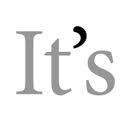Nothing grates more for an English grammarian than seeing an apostrophe used incorrectly – abused some would say!
This small mark is often used in written English yet many still stumble on its correct use.
Is it really necessary to know how to use it correctly?
Rumours of its imminent demise are premature and it still forms an important part of English grammar, so – as well as other IELTS Test tips we provide – IELTS Test candidates wanting to get high band scores do need to learn correct usage for use in the writing tasks for IELTS.
Even learned people sometimes omit it when it is needed and add it when it isn’t. Perhaps if you are sending a SMS text then knowing the “how” is not a help, but if you want to submit academic papers, proposals, letters and write educational articles then it is essential. It is for this reason that familiarisation with the guidelines for the correct use of the apostrophe comes in handy, although passing the IELTS test with a high band score gains you entrance to the college, university or professional career, where writing in English needs to be to a high standard.
When is the Apostrophe Used in the IELTS Writing Task?
You use an apostrophe in two cases:
- For contractions (don’t for do not)
- To show possession (Edward’s Pen means the pen belongs to Edward)
A key point that IELTS candidates should remember is not to use contractions in their formal writing. Marks will be lost. This article is talking about the correct use generally.
When apostrophes are used in the contraction of words, it replaces a letter or the letters omitted. .For example the word “can’t” is the contracted form of cannot, “wouldn’t” for “would not” and “shouldn’t” for should not. Contractions can also be used in auxiliary verbs, such as, is, has and have. “She’s a perfect candidate”; instead of “She is a perfect candidate.” or “She’s got a lot of appointments.” for “She has got a lot of appointments.” and “We’ve forgotten the appointment.”, instead of “We have forgotten the appointment.”
 However, there are traps and confusions to avoid. Words that when spoken sound the same but when written mean something different, for example, “Its a mistake that has it’s origins deeply rooted in misconceptions.” What’s wrong with the sentence? – It’s the apostrophe omitted for “it’s a mistake” – “it’s” being a shortened form of “it is” and which should be included in “its origins deeply rooted in misconceptions”; “its” as a possessive adjective.
However, there are traps and confusions to avoid. Words that when spoken sound the same but when written mean something different, for example, “Its a mistake that has it’s origins deeply rooted in misconceptions.” What’s wrong with the sentence? – It’s the apostrophe omitted for “it’s a mistake” – “it’s” being a shortened form of “it is” and which should be included in “its origins deeply rooted in misconceptions”; “its” as a possessive adjective.
Further, do not confuse yourself in the usage of “they’re” the contraction of they are; “their” the possessive determinant and “there” for place. “They’re on their way there?”; do the same words puzzle you at all? If your answer is yes, then you need to overcome a weakness in the technical aspect of writing.
“A child’s hat”, “children’s hats”; “boys’ hats” illustrate another function of the apostrophe – to show possession in both the noun and the indefinite pronoun. When showing singular possession as in “a child’s hat” just simply add an apostrophe and a ‘s’ at the end of the word.
This is different from making a plural possessive of a noun where the plural form ends with ‘s’. This requires you to place an apostrophe only after the plural form such as “boys’ hats”; but if a plural noun does not end in ‘s’, then add an apostrophe and ‘s’ as in “children’s hats”.
A second usage is when two or more nouns that own the same thing add an apostrophe and ‘s’ to the last noun, for example “Jerry and Tom’s brother”; however, for two or more nouns that own something separately, you place an apostrophe for each noun as illustrated in this example “Tom’s and Jerry’s cars”.
In the case of singular compound nouns like “father-in-law’s contract” the apostrophe and ‘s’ is added at the last word. The same rule applies to compound plural nouns “fathers-in-law’s contracts”. Pronouns like anybody, somebody, one and others take an apostrophe and ‘s’ to form the possessive, so you write “anybody’s concerns.” This rule does not apply to possessive pronouns for they already serve the function the name implies. “This book is hers” is an example.
Apostrophe Abuses
You see examples of misuse all over the place. Here are a few:
“I love orange’s, apple’s and pear’s.” This sentence contains an obvious mistake in using the apostrophe. To make a plural of proper nouns an apostrophe is not needed. So, when you want to indicate more than one orange, you should write “oranges”.
Any confusion can be overcome by remembering the general rule: add (-s) or (-es) to nouns including dates, acronyms and family names without an apostrophe before (-s).For example you can write “Jeans were popular in the 1970s”, “The Johansens buy and sell RTWs”, “ DVDs replaced VCDs “ and “Mangoes are exported to Japan”. However, as with many rules in the English language, there is an exception, when you want to make the meaning clear where otherwise it might be ambiguous. For example, if you write “There are many i’s and s’s in the word Mississippi for clarity purposes or there will be misunderstanding of ‘is” and “ss”. Similarly the apostrophe is used to pluralise digits, for example, 9’s or 10’s.
So Remember
The apostrophe serves several purposes in the English language: to show omission and possession but never to make plurals except letters and digits.
In the IELTS Test, if you are in doubt leave it out. It causes more reader confusion to insert one where it doesn’t belong than it does to omit one.
No contractions are allowed in formal writing so should not be used during IELTS writing.
Having read this post and as you prepare to write for the IELTS Task 1 and Task 2 try to spot uses and abuses of the apostrophe in the writing (articles and advertisements in newspapers, magazines and books) that you read.
I guarantee you will find some mistakes.
To your IELTS success,
James
P.S.If you liked this post please sign up below to receive more information like this and details of the resources we offer to help IELTS candidates aiming for band score 7 or higher.


Is it okay to use possessive forms in ielts writing 1 and 2? For example, can I say, “students’ concerns” instead of “the concerns of the students?”
Hi Hope
Good to see you on the site.
Thank you for your question.
In British English the possessive apostrophe, as a general rule, is normally used to talk about possessions of living things, so you are more correct to say
…students’ concerns and it is better to apply this rule for your accuracy.
However, here …the concerns of the students… is equally correct.
If you are talking about a possession which is a thing belonging to a thing, it is more usual to put, for example, …
the leg of the chair… rather than the chair’s leg, as an object cannot ‘own’ something.
As I’m sure you have found out, there are general rules you can apply to English grammar but they don’t apply all the time and, unfortunately, you can only find the exceptions out by lots of practice with the English language.
Hope this helps.
Andrea